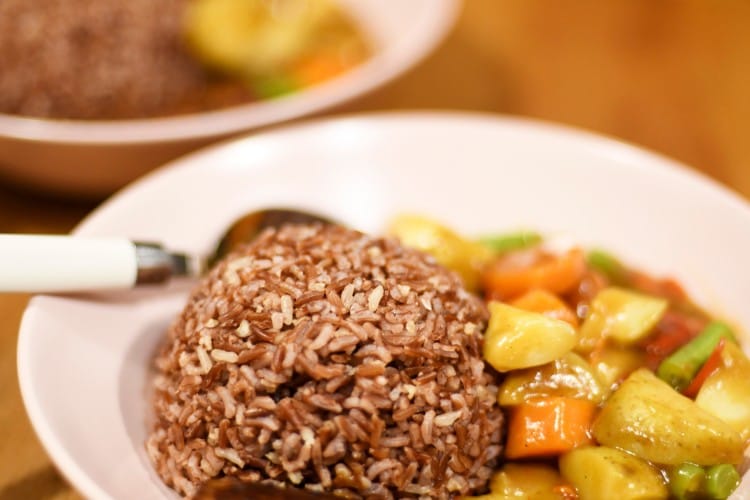No matter if you are in Latin America, India, China or the Caribbean, there will always be rice available and this has to do with it being a staple food for the entire world’s population.
Rice is a cereal grain that is harvested from a plant that grows between 3 to 5 feet (90 to 150 cm). It has smooth, hairless and slim leaves and small flowers as well.
This grain has the ability to be perfect when steamed, fried, boiled, when cooked with sweeteners and made into a dessert, or even when ground and transformed into flour.
In addition to the calories it provides to keep us energized and full, this grain is a source of iron, folic acid, selenium, phosphorus, and manganese among other paramount nutrients.
The Caribbean taste
During the colonial time, more than eleven million people were taken from Africa and brought to Latin America and the Caribbean as slaves. This movement of African people from one continent to another had a massive impact on cultural, social and culinary traditions.
National recipes and ways of cooking that originated in Africa started to appear in the Caribbean and were adapted to the ingredients available. In the places in which Africans were enslaved, their communities settled. Through the use of coconut milk, yucca, plantains, black beans and rice from the new lands, they forged their community identity, it was a way of feeling at home even though they were enslaved and miles away from their safe place.
As a result, after many centuries of African and Caribbean cultures coexisting, the Caribbean taste is tied up with African tradition. Present-day Caribbeans eat a diet that has many ingredients that were used and consumed by the Africans. For example, one of the many Jamaican national dishes is ackee and saltfish. As a matter of fact, ackee is an African fruit, but this dish was claimed by Jamaica and elevated as exotic and delicate.
Rice and peas are everywhere in the Caribbean, and they can be found as Jollof rice in Africa, made with tomato, onions, spices, vegetables and sometimes meat.
The influences of African cuisine can be found in almost every dish. Today we want to present you with a red beans and rice recipe that will make you feel the Caribbean taste with African roots, transformed into a vegan recipe.

Vegan Jamaican rice
This is a vegan version of Jamaican red beans and rice that yields four servings. It is healthy, high in fiber and protein and is full of that special and unique Caribbean flavor that can only be achieved through all the spices used.
Ingredients:
- 1½ Cups of rice.
- 1½ Cups of vegetable broth.
- 1 Onion.
- 3 Cloves garlic.
- 1 Can of tomatoes.
- 1 Can of red beans.
- 1 Tbsp olive oil.
- ½ Teaspoon ground cinnamon.
- ½ Teaspoon nutmeg.
- 1 Teaspoon ground cloves.
Directions:
- Start by washing the rice under running water. Drain it and leave it aside.
- Now heat a large skillet over medium heat, thinly slice a small onion and 3 cloves of garlic and sautée them with a little bit of olive oil. Do this for about four to five minutes, until the vegetables are soft, taking good care not to burn them.
- Now it’s time to add the spices: ground cinnamon, nutmeg and ground cloves should be added to the sautéed veggies. Your kitchen must be full of Caribbean flavor at this point.
- Pour the can of red beans and stir gently to mix all the ingredients and spices. Add the canned tomatoes and let all this simmer for about three minutes.
- The rice time has come: add the washed rice and stir, then pour in a cup and a half of vegetable broth. Add some salt and pepper to taste.
- Place a lid over the skillet and let your rice and beans cook for thirty to thirty-five minutes. We highly recommend you remove the lid and stir throughout this time to make sure all ingredients are thoroughly combined.
- When rice is ready, remove from the heat, cover the skillet and let this sit for about ten to twelve minutes before serving
Helpful tip
If you wish to add some protein to this vegetarian Jamaican dish, you can add some grilled tofu that will go perfectly well with it!

